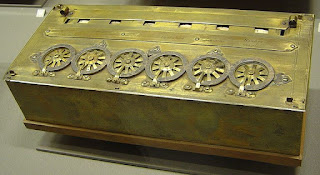History of Computer
Computers and computer applications are on almost every aspect of our
daily lives. As like many ordinary objects around us, we may need clearer
understanding of what they are. You may ask "What is a computer?" or
"What is a software", or "What is a programming language?"
First, let's examine the history.
for more info kindly watch it
1.
The history of computers starts out about 2000 years ago in Babylonia (Mesopotamia), at the birth of the abacus, a wooden rack holding two horizontal
wires with beads strung on them.
2.
Blaise Pascal is usually credited for building the first digital computer in 1642. It added numbers entered with
dials and was made to help his father, a tax collector.
The basic principle of his calculator is still used today in water meters and modern-day odometers.
3.
A step towards
automated computing was the development of punched cards, which were first successfully used with
computers in 1890 by Herman Hollerith and James Powers, who worked for the US. Census Bureau. They developed devices that could read
the information that had been punched into the cards automatically, without
human help. Because of this, reading errors were reduced dramatically, work
flow increased, and, most importantly, stacks of punched cards could be used as
easily accessible memory of almost unlimited size.
4.
These advantages were seen by commercial companies and soon led to the
development of improved punch-card using computers created by International Business Machines (IBM), Remington (yes, the same
people that make shavers), Burroughs, and other corporations. These computers
used electromechanical devices in which electrical power provided mechanical
motion -- like turning the wheels of an adding machine. Such systems included
features to:
o feed in a specified number of cards automatically
o add, multiply, and sort
o feed out cards with punched results
5. The start of World War
II produced a large need for computer capacity, especially for the military.
New weapons were made for which trajectory tables and other essential data were
needed. In 1942, John P. Eckert, John W. Mauchly, and their associates at the Moore school of Electrical
Engineering of University of Pennsylvania decided to build a high - speed
electronic computer to do the job. This machine became known as ENIAC (Electrical Numerical Integrator And Calculator)
6. Early in the 50s two
important engineering discoveries changed the image of the electronic -
computer field, from one of fast but unreliable hardware to an image of
relatively high reliability and even more capability. These discoveries were
the magnetic core memory and the Transistor - Circuit Element.
7.
Many companies, such as Apple Computer and Radio Shack, introduced very
successful PCs in the 1970's, encouraged in part by a fad in computer (video)
games. In the 1980's some friction occurred in the crowded PC field, with Apple
and IBM keeping strong. In the manufacturing of semiconductor chips, the Intel
and Motorola Corporations were very competitive into the 1980s, although
Japanese firms were making strong economic advances, especially in the area of
memory chips. By the late 1980s, some personal computers were run by
microprocessors that, handling 32 bits of data at a time, could process about
4,000,000 instructions per seconds.








Post a Comment